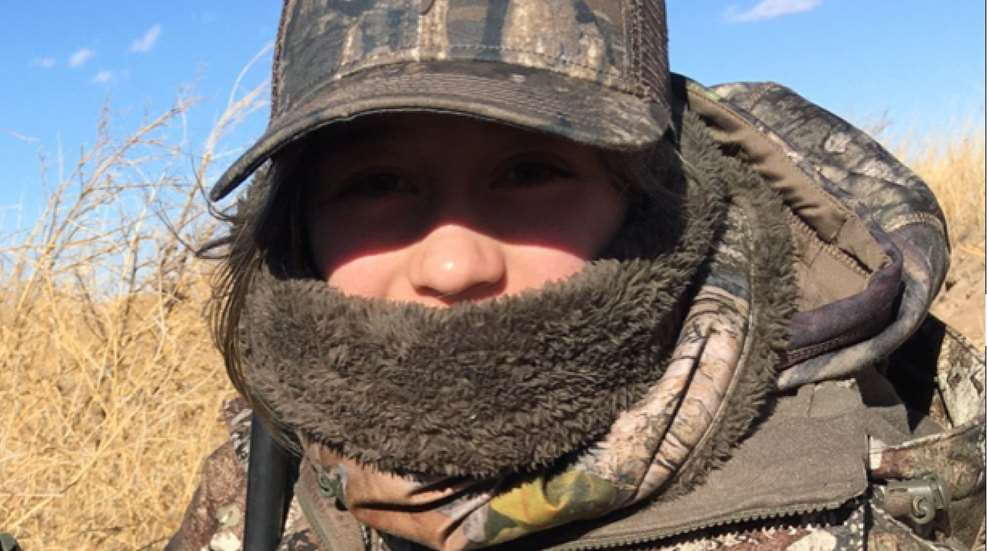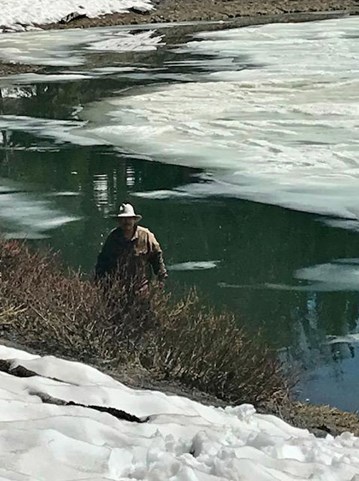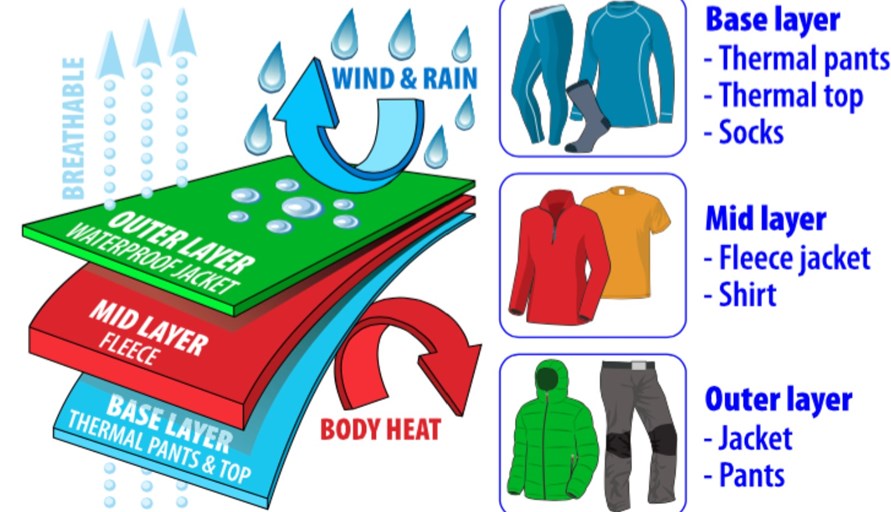
Winter can be an exciting time of the year for outdoorsmen and women. When the heat of summer is gone, Mother Nature offers up some of the best camping, hunting and fishing opportunities. It is impossible to enjoy any of these activities if you are cold. Being cold not only makes you miserable, but it can also be life-threatening. Hypothermia is when your body is exposed to cold temperatures and your inner core gets cold enough where it becomes dangerous. When your body loses heat faster than it can produce or retain it, if not treated quickly and properly this condition can result in death.

Hypothermia occurs when the human core drops below 95 degrees F and 30 degrees C; it is considered a medical emergency. Cold and wet conditions can cause hypothermia, but the temperature does not have to be below freezing for this to happen. Temperatures can even be in the 50s, but exposure to rain, snow, winds, and falling into water can rapidly increase the chances of hypothermia.
The early symptoms of hypothermia usually begin with uncontrollable shivering and exhaustion. When the body loses heat, this affects the brain which leads to clumsiness, slurred speech, a loss of motor skills, and confusion. If not recognized and treated quickly, mental awareness declines and ultimately the person will become unconscious.
Knowing how to prepare for outdoor activities can lower the risk of developing hypothermia. It all begins by planning ahead and making sure you have the proper layering while in the field, to stay warm.
Base Layer
The base layer is also known as the underwear layer. The purpose of the base layer is to wick away moisture or sweat from the skin. The wicking property of the base layer is to keep the skin dry. Additionally, base layers need to contact the skin or tightly fit to work properly. If you are wet, you are cold. Wet or damp skin can lead to hyperthermia regardless of the outside temperature. Remember, cotton should never be used as base layers in the wintertime because of the moisture-retaining properties of the fibers.
The three base layers are lightweight, midweight and heavyweight, and are usually indicated on the packaging or garment tag. Lightweight layers are for moderate to cool temperatures. Midweight layers are for cold temperatures. Lastly, heavyweight layers are for below-freezing temperatures. Everyone has different sensitivities to temperatures, so choose according to what you consider to be “cold.”
Three different materials used for base layers. Synthetic materials are the most common base layer material. These include nylon, polypropylene, rayon and blends. The benefits of synthetics are that they have the best wicking properties, these materials stretch for a comfortable fit, they are very durable and long-lasting. The downside of synthetics is they are known for retaining odors. The material used is susceptible to the buildup of odor-causing bacteria.
Merino wool is the next popular base layer. Merino wool is not itchy as you might think. It is very soft due to the ultrafine fibers. The benefit of this base layer is that it has great wicking properties, it is moderately durable, it is odor-free because it prevents stinky bacteria buildup, and it can cool the body in warmer temperatures because it retains moisture in its core. The downside of merino wool is that it can be more expensive than synthetics and since it retains moisture in its core, it can take longer to dry.
Silk is the third most popular base layer. Silk is only effective for less strenuous activities. The benefit of this base layer is that it is very soft and comfortable. The downside is that it is only moderately effective for wicking moisture, and it is not as durable as synthetic or merino wool. Silk is also very susceptible to odor-causing bacteria.

Boy Scouts of America image
Middle Layer
The middle layer is also known as the insulating layer. The purpose of the middle layer is to retain heat to protect the body from the cold. The more efficient the middle layer is in retaining heat, the warmer you will be.
The middle layer is the toughest for most outdoorsmen and women. This is because it is easy to just put on a flannel shirt and a pair of blue jeans on top of the base layer and go outside. Flannel shirts and blue jeans are made of cotton so if they get wet, they stay wet and as a result, make the person wearing these items cold. Middle layers need to be made of synthetic fibers or wool.
Wool shirts and pants are always a wise choice when in very cold and wet environments. Other choices include synthetic materials such as nylon and wool/synthetic blends. These wick away moisture and dry very quickly. The biggest benefit of synthetic material is that it is lightweight so you can still move about easily and have a good range of motion.
Polyester fleece is a great choice for a middle layer material. This type of synthetic material can be made into shirts, hoodies, and pants. The benefit of this material is that it can come in three weights. These weights are lightweight, midweight, and heavyweight sometimes designated as 100, 200 and 300 weight, respectively. It also stays warm, even when wet. Additionally, if the weather turns warmer, this material breathes to keep the person wearing this material cool. The downside is that since it is breathable, wind can pass through and take away warmth. Some polyester fleece comes with an inner wind-blocking membrane to prevent this from happening.
Outer Layer
The outer layer is also known as the shell layer. The purpose of the outer layer is to shield the wearer from the wind, life-threatening temperatures and rain. Outer layers include windbreakers, coats, jackets and insulated coveralls. Not only should this layer keep you warm, but it should also prevent water from reaching the inner two layers you have beneath.
Down insulated jackets offer more warmth by weight than any other insulating materials. This type of outer layer is easily compressed and stored in a pack if the weather warms up during the day. The efficiency or warmth of down-filled outer wear is measured in a 450-900 power scale. Down is encased in a shell that makes it wind and water resistant. The downside of down outer wear is that if it gets wet, it is heavy and loses some of its heat retention properties.
Wool coats and overcoats are not as popular as they once were in the past. This type of outer layer is very effective but can become very heavy if it becomes wet. Wool does not compress so coats and overcoats can be burdensome if hiking long distances.
Synthetic insulated material is the most popular type of outerwear today. These include the trade named Gore Tex, Quallofil and Hollow Fill. Synthetic insulation is encased in a shell for wind and water resistance. It also retains its warmth properties when wet. Many outer layer clothing have removeable liners inside the jacket or coat. These liners can be removed so the jacket or coat can be worn in more moderate temperatures. Many of these liners can be worn without the coat or jacket if an even more lightweight outer covering is needed.
If someone you are with gets hypothermia, you need to get them warm quickly. Give them something warm to drink, get them out of wet clothing, and warm them up by wrapping them in dry clothing, blankets, sleeping bags, or even body to body contact to raise their body temperature. Staying warm is very important when enjoying the outdoors in the winter. Hypothermia is a real danger and should be taken seriously. Spending time outdoors should be enjoyable—not life threatening. Stay warm!














































